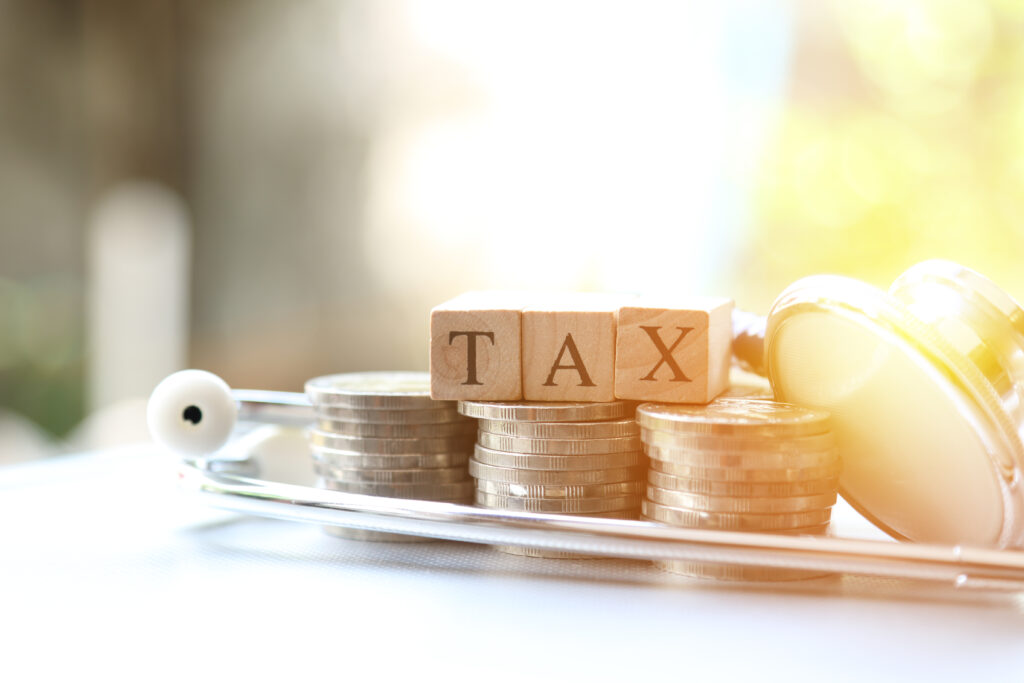
Article
26 June 2025
Payroll Tax and What It Means for Queensland Doctors
Payroll tax has become one of the most talked-about legal and financial issues facing medical, dental, and allied health professionals in recent years. […]


In today’s competitive landscape it is essential to protect the identity and reputation of your business through safeguarding your brand. One crucial, yet often overlooked element in achieving this is the strategic use of trade marks.
What is a Trade Mark and how are they Regulated?
A trade mark is a sign that is used to distinguish your business from others that provide similar services or sell similar goods. There are numerous different signs that can be trade marked including words, shapes, images, sounds, or a combination of different signs.
Trade marks are regulated and managed by the Australian Federal Government, through the IP (Intellectual Property) Australia Agency (IP Australia). For further information regarding IP Australia and what they do, visit www.ipaustralia.gov.au/trade-marks.
Why Should Trade Marks be a Priority?
A trade mark is more than just a logo or a name; it’s a powerful legal tool that distinguishes your practice or business from others in the market. Securing a trade mark allows a business to ensure:
Legal Tips and Common Pitfalls to Avoid
Through the legal work we do with businesses around Australia every day, our team sees the common mistakes made when applying for trade marks that impact on their approval, success and value.
When registering trade marks, it’s important to avoid using geographical or descriptive terms in your trade mark, as it is a requirement that it must be capable of distinguishing the product from another similar product. This means that if another party may legitimately use such wording to describe their own product (e.g. if the trade mark is descriptive, like “Brisbane GPs” or “Coffee Maker”), then it is likely your trade mark will not fulfil this requirement and will be rejected by IP Australia.
Furthermore, the use of names of people within business names or trade marks limits their value and longevity of use when the practice or business expands or is sold. For example, when Dr Bob Smith retires, a trade mark for the Dr Bob Smith Medical Practice may be of limited value to the buyer of the practice.
What Can Be Trade Marked?
While other signs (for example sounds or smells) can be trade marked, the most common trade marks are images (such as a logo) and words (such as a business name or a slogan). Logos containing words are generally more likely to be accepted than just words (as the images and style of the logo narrow the trade mark’s scope and make it more capable of distinguishing the goods or services offered).
Logo trade marks should as a general rule be applied for in greyscale, however if colour is a crucial element of the trade mark, a logo application in colour may be suitable instead. For this reason, we recommend ensuring you retain a greyscale copy of any logos you use in your business for any trade mark applications.
Classes of Trade Marks
There are 45 different classes that your trade mark may relate to. These are broken down into either goods or services. A class describes the specific type of good or service that your trade mark pertains to. For instance, class 25 includes “clothing, footwear, and headwear” and class 38 includes “telecommunications services”. Your trade mark may be used for multiple classes, if so this should be reflected in your application to IP Australia. You will be charged for each class that you register your trade mark for.
Legal Tip: Correctly identifying the class that your trade mark fits into is crucial for registration as it will determine what is actually protected by your trade mark. Your trade mark will only relate to the good or service that you have registered it for and will not protect use of your trade mark for anything else. It’s important to be aware that you cannot adjust or add additional classes after your application is submitted. If the appropriate class or classes are not identified this can leave you unprotected or result in your application being rejected.
IP Australia Trade Mark Search
Prior to submitting an application, we suggest that you conduct a search to see what existing trade marks are in use and whether they may conflict with your plans. You can do this by visiting: ipaustralia.gov.au/trademarks/search/quick. However, even if no similar trade marks are obvious, IP Australia may refuse to grant your trade mark on another basis.
Where to From Here?
Registering a trade mark is a proactive step to protect unique identity of your business, secure legal rights, and enhance your competitive edge in business. Don’t wait for a crisis to underscore the importance of a trade mark – act now to safeguard the future of your business. We recommend enlisting the support of a legal professional to help you navigate your way through the registration process and ensure you achieve the best trade mark registration.
To discuss your trade mark requirements, please contact Craig Hong, Director, Hillhouse Legal Partners on (07) 3220 1144 or email craig@hillhouse.com.au.
The information in this blog is intended only to provide a general overview and has not been prepared with a view to any particular situation or set of circumstances. It is not intended to be comprehensive nor does it constitute legal advice. While we attempt to ensure the information is current and accurate we do not guarantee its currency and accuracy. You should seek legal or other professional advice before acting or relying on any of the information in this blog as it may not be appropriate for your individual circumstances.